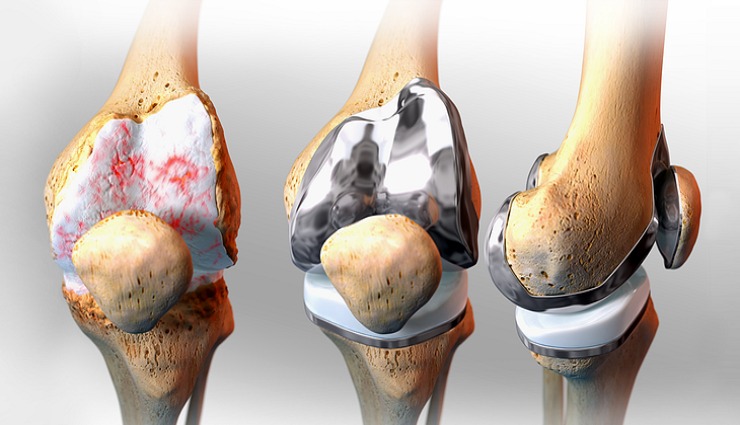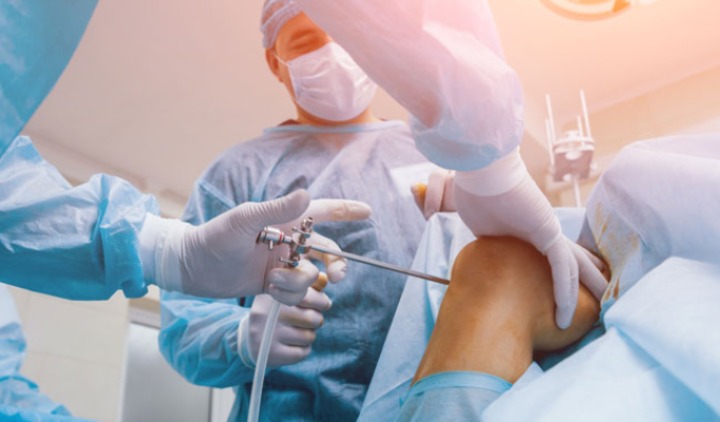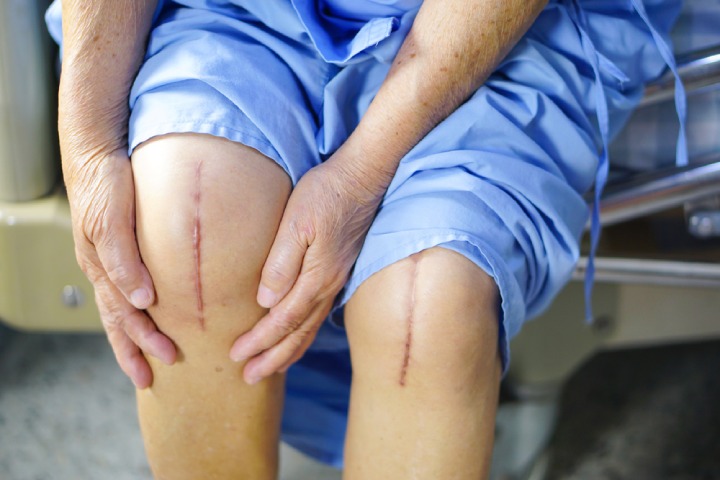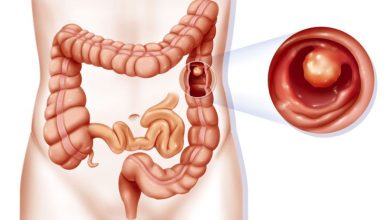
Knee replacement (knee arthroplasty) is a type of surgery to replace all or part of the damaged knee joint. In this method, the surgeon replaces the damaged cartilage and bone with an artificial joint. Full recovery from surgery may take up to a year, but a person can gradually resume normal activities. This article will cover everything you need to know about knee replacement. Stay with us.
What is knee replacement surgery?
The knee is one of the most important and, at the same time, the most vulnerable joints in the body. In a situation where all or part of this important joint is damaged, and the ability to move or perform daily activities is taken away from the person, according to the doctor’s diagnosis and prescription, the damaged joint is replaced with an artificial joint made of metal and plastic (prosthesis).
Types of knee joint replacement
The surgeon recommends total or partial joint replacement depending on the severity of the injury and the affected area of the knee.
- Total knee replacement: This is the most common type. In this method, the surgeon replaces all three areas of the inner meniscus, the outer meniscus, and the sub-patella of the knee with an artificial joint.
- Partial knee joint replacement: This type is for when only part of the knee joint is damaged. It is more common in young adults who have suffered an injury or trauma.
Arthroplasty is useful for treating what types of injuries?
Suppose a person has severe symptoms that do not improve with non-surgical treatments. In that case, the doctor may prescribe a knee replacement. Injuries that can be treated with this method include:
- joint stiffness;
- knee swelling and pain ;
- severe knee arthritis ;
- hemophilia ;
- joint rheumatism ;
- Difficulty moving the knee;
- crystal deposition diseases such as gout ;
- bone dysplasia (bone growth disorder);
- Ligament damage or infection that has led to severe arthritis;
- Avascular necrosis (loss of bone cells due to lack of blood supply).
What steps should the patient go through before knee joint replacement surgery?
Usually, for arthroplasty, the patient must go through these steps:
- physical examination to ensure adequate health for surgery;
- performing various prescribed blood tests depending on clinical conditions;
- taking an electrocardiogram to check the health of the person’s heart ;
- visiting a dentist and confirming oral health to reduce the possibility of infection after surgery;
- Imaging tests, including knee x-rays. (A person may also need an MRI or CT scan .)
- Talking to the doctor about the drugs and supplements and stopping their use if the doctor decides.
What is the process of knee joint replacement surgery?
Anesthesia is the first medical procedure for knee replacement surgery. The procedure is as follows:
- The surgeon makes an incision on the patient’s knee joint.
- Removes damaged cartilage and bone from the knee joint.
- It replaces the damaged bone with an artificial joint or prosthesis.
- A plastic spacer is placed between the prosthesis and the bone so that the person can easily move the joint.
- If necessary, the knee patella is shaped to fit the new artificial joint.
What happens after joint replacement?
After the surgery, the patient is transferred to the recovery room and monitored for a few hours until he is fully awake. During this period, his vital signs and level of pain are checked regularly. Some patients are discharged from the hospital on the same day of the operation, and some need to stay overnight in the hospital according to the doctor’s advice. The discharge time depends on the surgeon’s opinion.
Pain relief after surgery
After surgery, especially during the first few weeks of recovery, the patient will feel pain in the knee area. Usually, the doctor will prescribe a combination of painkillers, non-steroidal anti-inflammatory drugs (if it is safe for the person to use them), and acetaminophen to relieve the patient’s pain and will tell him the dosage, how, and when to take them.
Benefits of knee replacement surgery
Knee arthroplasty is a safe and effective operation that allows the patient to regain mobility and get rid of joint pain. Most of the people who have done this procedure are satisfied with it. The most important advantages of arthroplasty are:
- reducing knee pain;
- improving the ability to move the knee;
- Increase the quality of life.
Complications of knee joint replacement
Although complications from arthroplasty are usually rare, some people may experience pain or other complications after this procedure. The rare side effects of joint replacement are:
- blood clotting ;
- nerve problems;
- blood vessel problems;
- creation of scar tissue inside the knee;
- Infection inside the knee or surgical site;
- Decreased range of motion and joint stiffness;
- Prosthetic implant-related problems include premature wear of the prosthesis or its loosening.
Care after knee surgery
Care after knee surgery is very important for faster recovery and prevention of possible complications. Some of the most important care points that you should follow after knee surgery are:
- Keep your knees as high as possible: If you are lying down, put some pillows or cushions under your knees. If you are sitting on the sofa, place a small table in front of you and stretch your legs on it. You should not sit on the floor for six weeks after the operation.
- Keep the suture site clean: Your doctor will give you instructions on how to care for the incision site. According to the schedule, change the dressing with hygiene and keep the cut area clean.
- Do the recommended exercises: Usually, the surgeon recommends the patient do certain exercises after the operation and before discharge. The purpose of doing exercises after knee joint replacement surgery is to strengthen the muscles around the knee and prevent joint stiffness. Do the exercises as directed by your doctor.
Common questions
1. How long does knee joint replacement take?
This procedure usually takes one or two hours.
2. How long can a person return to work after knee joint replacement?
The time it takes to return to work depends on the level of occupational stress and activities related to the knee. Most people need to rest at home for a few weeks after knee replacement surgery. In the postoperative visit, after examining the operation site and the patient’s condition, the doctor will determine the time it takes to return to work and perform daily activities.
3. In what case should we go to the doctor immediately?
If you see any of these symptoms, be sure to see a doctor:
- Chest pain ;
- Shortness of breath ;
- bleeding;
- severe pain in the wrist or leg pain ;
- fever above 39 degrees Celsius;
- signs of infection at the surgical site, such as swelling;
- Severe pain that does not get better after taking painkillers.
4. Is it permissible to sit on the floor after knee joint replacement?
The doctor will warn the patient about not sitting on the floor after knee joint replacement. The patient should not sit on the floor for 6 weeks to 2 months after the operation.
5. How much does knee joint replacement cost?
The cost of the operation depends on various criteria, including the reputation of the doctor, the quality of the prosthesis, and the type of hospital and its equipment. It does not have a fixed rate.
final word
Choosing a knee replacement operation is a sensitive and important decision, and it is completely normal to be anxious and have hundreds of questions in your mind. Do not worry if your doctor has recommended this procedure to you due to joint pains or any other problem. Although recovery from arthroplasty can take months, it is well worth it. According to the experience of patients after knee joint replacement, joint pain after this operation is much less than before, and the ability of the person to perform daily routine activities is much better than before.
Are you or someone close to you about to undergo this operation, or have you already operated and are currently recovering? In any case, we will be happy to hear your opinions and valuable experiences.









I do trust all the ideas youve presented in your post They are really convincing and will definitely work Nonetheless the posts are too short for newbies May just you please lengthen them a bit from next time Thank you for the post
Thanks I have recently been looking for info about this subject for a while and yours is the greatest I have discovered so far However what in regards to the bottom line Are you certain in regards to the supply
Hi, I’m Jack. Your website has become my go-to destination for expert advice and knowledge. Keep up the fantastic work!